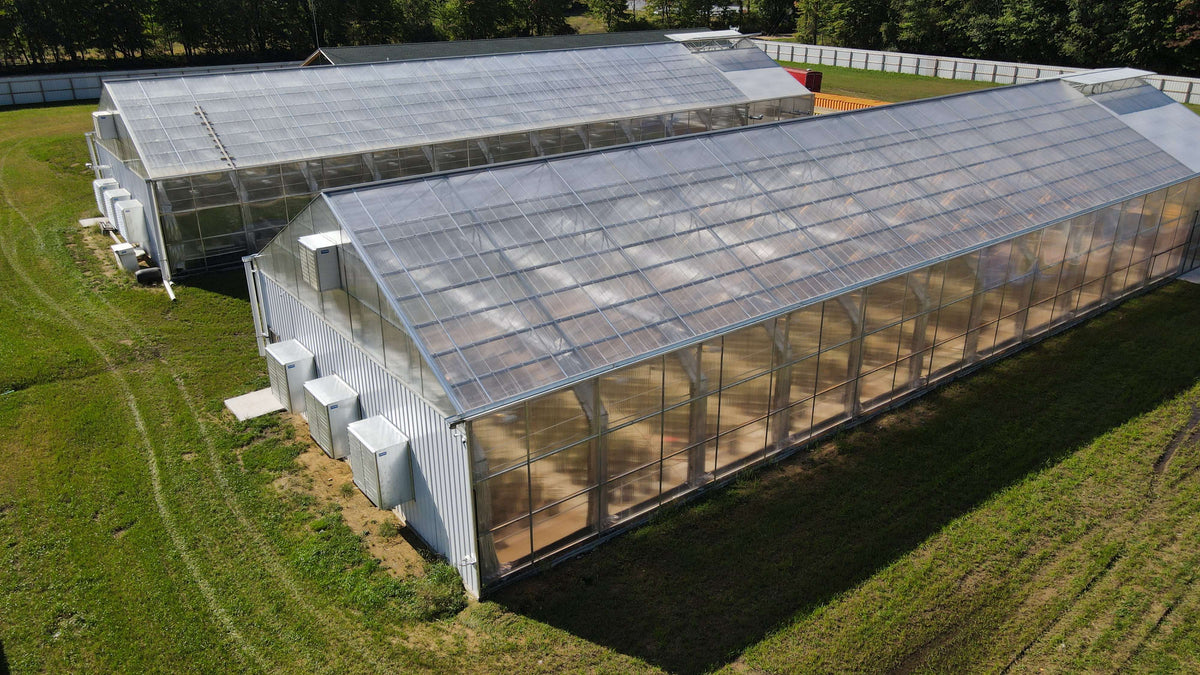Building Desires, Growing Environment-friendly: Monarch Greenhouse Builder Utah at Your Solution
Wiki Article
The Future of Greenhouses: Technologies in Sustainable Farming
Are you curious concerning the future of greenhouses and just how they are transforming lasting agriculture? Look no more! In this post, we will certainly discover the amazing developments that are paving the method for a greener and more efficient farming industry. From innovative environment control systems to vertical farming strategies, water-efficient watering methods, sustainable energy assimilation, and smart data analytics, these advancements are transforming the method we grow our food. Prepare to find the future of lasting farming in greenhouses!Advanced Climate Control Solution
To attain optimum growing problems, you can depend on the advancements in greenhouses with advanced climate control systems. These systems have actually reinvented the means we grow crops, offering a regulated setting that is favorable to plant development. With these cutting-edge systems, you can currently manipulate temperature level, moisture, light levels, and even carbon dioxide focus to produce the best problems for your plants to thrive.Among the crucial functions of these innovative environment control systems is their capability to manage temperature. By utilizing sensing units and automated controls, the greenhouse can adjust the temperature based upon the specific requirements of the plants. This guarantees that they are never ever revealed to severe warm or cool, which can be detrimental to their development.
Moisture control is one more essential element of these systems. By keeping the suitable humidity levels, you can prevent problems such as mold and mildew, mold, and condition from impacting your crops. These systems can additionally manage the amount of light that reaches the plants, making sure that they receive the ideal amount for photosynthesis.
Additionally, progressed climate control systems can even manipulate CO2 concentrations. By boosting the degrees of CO2 in the greenhouse, you can boost plant growth and performance. This is particularly valuable in locations with low all-natural carbon dioxide degrees.
Vertical Farming Techniques
One vital upright farming technique is using stacked expanding systems. Stacked expanding systems are commonly utilized in city areas where room is restricted.One preferred technique is referred to as upright hydroponics, where plants are expanded in nutrient-rich water without dirt. This technique is extremely reliable as it lowers water usage by as much as 90% compared to conventional farming techniques. In addition, given that the plants are grown indoors, they are secured from insects and conditions, reducing the requirement for chemicals.
Another strategy is aeroponics, which entails putting on hold the plant origins in a haze or air atmosphere. This method permits optimum nutrient absorption and oxygenation, resulting in faster development and higher returns. Aeroponics additionally makes use of less water than typical farming and can be implemented in upright systems, making it a popular selection for upright farming.
Water-efficient Irrigation Approaches
When it comes to executing water-efficient irrigation techniques in lasting agriculture,Taking full advantage of water conservation is essential. With worldwide water shortage becoming a pressing concern, it is critical to create ingenious strategies that optimize water use in greenhouse operations.One appealing approach is drip watering, which supplies water directly to the plant roots, reducing waste and dissipation. By making use of a network of tubes with small emitters, water is applied gradually and specifically, making sure that plants receive the needed wetness without excess overflow.
Another reliable method is using soil moisture sensors. These devices measure the dampness web content in the dirt and offer real-time information to farmers. By monitoring the dirt's moisture levels, farmers can precisely figure out when and just how much water to use, stopping over-irrigation.
Moreover, the application of rain harvesting systems is acquiring popularity in greenhouse farming. Gathering rainwater from rooftops and saving it in storage tanks permits farmers to utilize this all-natural resource for watering objectives, decreasing dependence on typical water resources.
Last but not least, the adoption of automated watering systems can dramatically enhance water performance. These systems utilize sensors to detect dirt dampness levels and climate condition, readjusting irrigation schedules appropriately. By enhancing water use based upon actual plant needs, these systems can minimize water waste and advertise sustainable farming practices.
Renewable Resource Integration
Eco-friendly power combination in greenhouses uses numerous advantages, including minimized operating prices and reduced dependence on non-renewable power sources. The generated power can after that be made use of to run numerous procedures within the greenhouse, such as lights, air flow, and heating systems. These Monarch Greenhouse construction Utah generators harness wind power and convert it into electrical power, which can be utilized to supplement the power requirements of the greenhouse.Smart Data Analytics and Automation
To enhance the effectiveness of your greenhouse procedures and enhance source use, consider carrying out clever data analytics and automation. Smart data analytics involves gathering and analyzing data from different sensing units and devices within your greenhouse.
This can consist of automating the control of lights, ventilation, irrigation systems, and nutrient distribution. By automating these procedures, you can ensure that your plants get the appropriate conditions and nutrients at the ideal time, without the demand for consistent hands-on intervention.
Additionally, wise information analytics and automation can collaborate synergistically. The data collected by sensors can be made use of to notify automatic systems, enabling them to make real-time modifications based on the present conditions. This integration of data analytics and automation can result in a lot more precise and efficient source allowance, eventually causing greater yields and better crop quality.
Conclusion
In verdict, the future of greenhouses in sustainable farming looks promising. With advanced climate control systems, vertical farming techniques, water-efficient watering approaches, and renewable power integration, greenhouses are ending up being more effective and ecologically pleasant.
By enhancing water use based on actual plant needs, these systems can decrease water waste and advertise lasting farming methods.

Report this wiki page